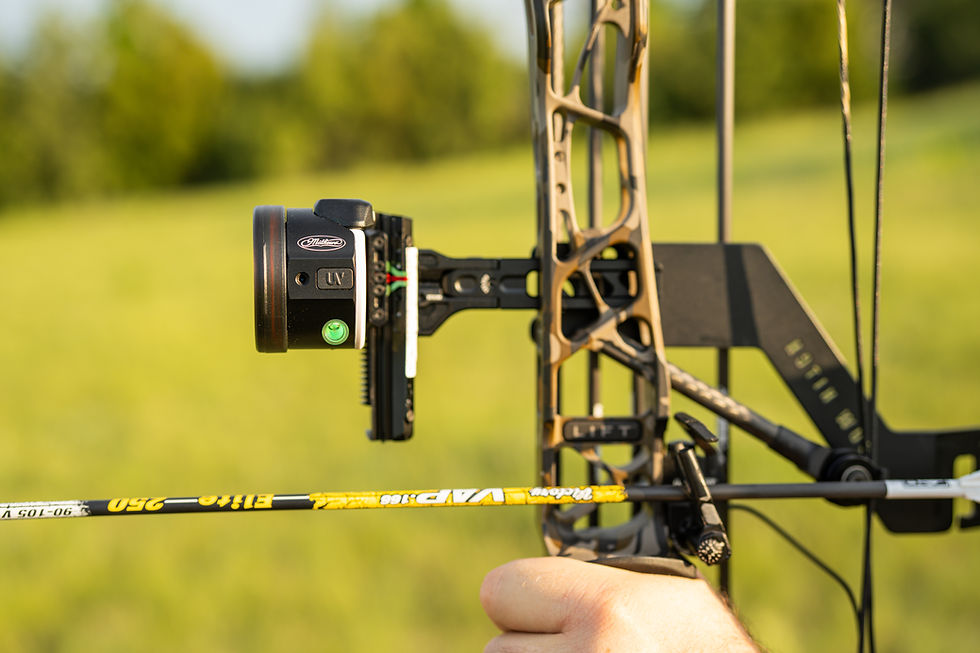Does FOC (Front Of Center) Even Matter?
- Chase Ryan

- Aug 19
- 3 min read
Updated: Aug 20
Alright folks, let's talk arrow flight. Specifically, let's dive into that often-discussed, sometimes misunderstood concept: Front of Center, or FOC. If you're an archer, you've probably heard the term thrown around. But does it really make a difference out there in the field?

What exactly is Front of Center?
Simply put, FOC is the percentage of your arrow's total weight that is located in the front half of the arrow. Think of it like a dart. Where's most of the weight? Up front, right? This helps it fly straight and resist wobbling in flight. A higher FOC helps your arrow do the same, especially when dealing with less-than-perfect shooting techniques or wind.
Okay, we know what it is, but what does FOC do for your arrow? This is where things get interesting. Having more weight forward has several key benefits:
Improved Arrow Flight and Stability: Just like a dart, that forward weight helps your arrow fly straighter and recover faster from the wobble of launch. This makes your setup more forgiving of small form errors.
Enhanced Penetration: A heavier front end concentrates kinetic energy at the point of impact. This helps the arrow drive deeper, especially when encountering bone or tough hide. It's like swinging a hammer – more weight behind the swing equals more force.

The Downside of Going Too Heavy
While a high FOC is great for penetration, it's not a magic bullet. Going too heavy on the front end can come with some serious trade-offs:
Slower Arrow Speeds: Physics is a bear. More weight means less speed. While a slower, heavier arrow carries more momentum for penetration, a significant drop in speed. Equalling to longer time your arrow spends in the air.
A "Nose-Diving" Trajectory: An excessively high FOC can cause the arrow to drop more dramatically at longer distances. This makes your arrow's trajectory less "flat," meaning that a small miscalculation in range can result in a complete miss in tight shot areas.
Tuning Issues: A very high FOC can make your arrow's dynamic spine behave differently, which can cause tuning headaches. An arrow that is suddenly "under-spined" for your bow can lead to inconsistent groups and poor flight.
What's the sweet spot for hunting big game?
There's no single perfect number, but most bowhunting experts and arrow manufacturers like Easton recommend an FOC in the 10-15% range for a balanced hunting setup. This provides an excellent blend of stability, penetration, and downrange performance.
For some archers, especially those who prioritize maximum penetration on tough animals like elk or wild hogs, pushing that FOC even higher—into the 16-20% range or beyond—is a popular strategy. This is often done by using heavier broadheads or weighted inserts.
How do we calculate FOC?
Find the balance point of your arrow. Mark this spot.
Measure the distance from the nock end of the arrow to the balance point.
Take this measurement and subtract half the total length of your arrow.
Divide this result by the total length of your arrow.
Multiply by 100 to get your FOC percentage.
Don't worry if that sounds a little math-y. There are plenty of online FOC calculators out there that can do the heavy lifting for you.
The Takeaway:
FOC isn't just a buzzword; it's a critical component of a high-performing hunting arrow. While the industry standard of 10-15% is a great starting point for most big game hunting, finding your own "sweet spot" is key. A well-balanced arrow with good FOC is going to be much more likely to fly true and deliver the necessary energy downrange.
Take the time to calculate your FOC and experiment with your setup. It could make all the difference when that moment of truth arrives.
.png)




Comments